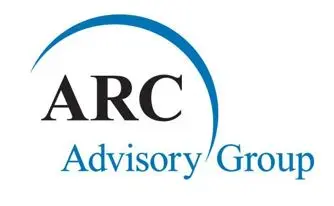

In today's fast-paced world, with technological leaps and growing environmental concerns, the circular economy is increasingly  being acknowledged as a paradigm of the future. The days of the linear "take, make, dispose" model, which has led to resource depletion and environmental degradation are coming to a close. Instead, we're all seeing the rise of a more sustainable, regenerative approach that emphasizes resource efficiency and waste reduction.
being acknowledged as a paradigm of the future. The days of the linear "take, make, dispose" model, which has led to resource depletion and environmental degradation are coming to a close. Instead, we're all seeing the rise of a more sustainable, regenerative approach that emphasizes resource efficiency and waste reduction.
At the core of the circular economy is a stark departure from the traditional linear model. This new approach focuses upon:
Designing for Circularity: Products that are designed and built to be easily disassembled, repaired, and recycled, ensuring longevity and minimal waste.
Resource Efficiency: With an emphasis on the strategies of remanufacturing and sharing to prolong product life.
Closing the Loop: Creating systems where materials are continuously recycled, reducing the need for new resources and lessening environmental impact.
Disruptive technologies are driving this transformation. Here's a difference: a few that are making disproportional and very positive impacts:
IoT and Data Analytics: Internet of Things (IoT) has grown to become a plethora of devices that share data which is very valuable for tracking product lifecycles. As an example, sensors in products can shift the paradigm from ownership to "product-as-a-service" models. Coupled with AI-powered data analytics, businesses can make informed decisions on product design and material recovery.
Advanced Materials and 3D Printing: The advent of bio-based materials and 3D printing is revolutionizing manufacturing. These technologies not only reduce waste but also enable the quick creation of customized products and facilitate easy repair.
Blockchain: Known for its transparency, blockchain can trace products from origin to end-of-life, enhancing trust and verifying sustainability claims. This empowers consumers to make informed choices, which further drives businesses towards circular practices.
Sharing Platforms: The rise of the sharing economy, ride-sharing is one example, promotes efficient resource use. It aligns with the circular economy's goal of maximizing product utility while minimizing environmental impact.
Reverse Logistics and Remanufacturing: Technologies are transforming how products are refurbished and reintroduced. IoT aids in optimizing the collection of used products, while advanced technologies restore products to near-new conditions.
Several sectors are already leveraging these technologies for circular practices:
Automotive: IoT sensors in cars detect issues early, extending vehicle life and reducing environmental impact.
Fashion: With blockchain, the fashion industry can trace a garment's journey, promoting responsible sourcing and production.
Waste Management: Technologies are optimizing waste collection, reducing emissions, and creating recycling opportunities.
Despite the promise, integrating these technologies isn't without hurdles. Concerns about data privacy, high initial costs, and the need for supportive regulations are challenges to address.
Collaboration is the key. Governments, businesses, and academia are beginning to work together to foster innovation, support R&D, and share knowledge. Additionally, education and awareness are paramount. Of course, understanding the circular economy's value and the role of disruptive technologies is essential.
As industries evolve, the circular economy offers a sustainable path forward. Disruptive technologies are not just accelerating this transition but also spurring economic growth and environmental stewardship. By embracing these innovations and fostering collaboration, stakeholders are building the way to a more prosperous, regenerative circular economy.

